Explore Matabeleland - Zimbabwe Travel, Africa
Matabeleland, nestled in the southwest of Zimbabwe, is a region rich in culture, history, and natural wonders, offering a unique travel experience. Known for its connection to the Ndebele people and its stunning landscapes, this destination offers a blend of heritage and adventure. From the awe-inspiring Victoria Falls to the wildlife-filled plains of Hwange National Park, Matabeleland is the perfect getaway for travelers seeking Zimbabwe’s vibrant history and experiencing authentic African culture.
Population: Approximately 2.6 million in 2022.
Economy: Matabeleland's economy is driven by agriculture, mining, and tourism, with industries such as cattle ranching, gold mining, and nature-based tourism contributing significantly to regional growth.
Landmarks: Famous for the Victoria Falls, Hwange National Park, and the Matobo Hills.
Zimbabwe
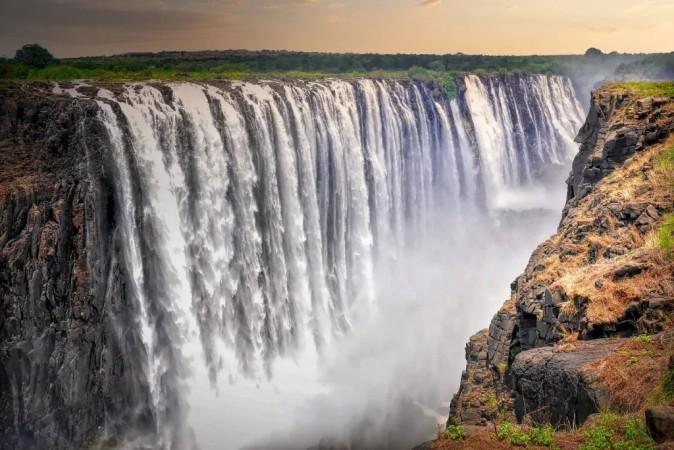
Overview of Matabeleland
History & Cultural Influence
Matabeleland’s history is deeply tied to the Ndebele people, who settled here in the 19th century after migrating from what is now South Africa. During the late 1800s, the Ndebele kingdom, led by King Lobengula, fiercely defended its territory against British colonization, resulting in the Matabele Wars. This historical backdrop is still evident today, as local traditions and customs reflect a strong sense of pride in the region’s cultural heritage. Visitors can explore colonial-era buildings that stand in contrast to traditional Ndebele homes, known for their colorful murals and circular designs. You can also visit historic sites such as King Lobengula’s ruins or engage in cultural tours to understand how the past shapes today’s way of life.
Interaction with the Locals
Matabeleland is home to a population of around 2.6 million people, predominantly from the Ndebele ethnic group, alongside other smaller groups such as the Shona and Kalanga. The citizens of Matabeleland are known for their rich cultural heritage, with the Ndebele people playing a central role in shaping the region’s identity. They speak Southern Ndebele as their primary language, though English is also widely spoken. The people are noted for their warmth and strong community ties, which reflect their deeply ingrained traditions and beliefs passed down through the years.
Victoria Falls - © The Sydney Morning Herald
Top Attractions in Matabeleland
Victoria Falls
No visit to Matabeleland is complete without seeing Victoria Falls, one of the world's seven natural wonders. The falls, called locally as Mosi-oa-Tunya ("The Smoke that Thunders"), are breathtaking, especially during the rainy season when the Zambezi River reaches its peak capacity. Adventure activities like white-water rafting and bungee jumping are available for thrill-seekers, while those looking for a peaceful experience can enjoy scenic boat cruises at sunset.
Hwange National Park
Home to one of the largest elephant populations in Africa, Hwange National Park offers a quintessential safari experience. Spanning over 14,000 square kilometers, the park is teeming with wildlife, including lions, zebras, giraffes, and the elusive African wild dog. Whether on a guided game drive or a walking safari, the park provides an unforgettable chance to observe wildlife in its natural habitat.
Matobo Hills
A UNESCO World Heritage site, Matobo Hills is a place of spiritual significance and natural beauty. The region is well-known for its balanced rock formations and ancient San rock art, some of which date back thousands of years. Matobo is also home to the final resting place of Cecil Rhodes, one of the most controversial figures in Zimbabwe’s colonial history. For hikers and history enthusiasts, this site is a must-visit.
Bulawayo
Matabeleland’s largest city, Bulawayo, is a blend of colonial charm and modern culture. Its wide streets and historical buildings give it a unique atmosphere. Visit the Natural History Museum to learn more about Zimbabwe’s past, or explore the Makokoba Market for a taste of local life. The city is also a gateway to many nearby attractions, including the Khami Ruins, another UNESCO site located just outside of town.
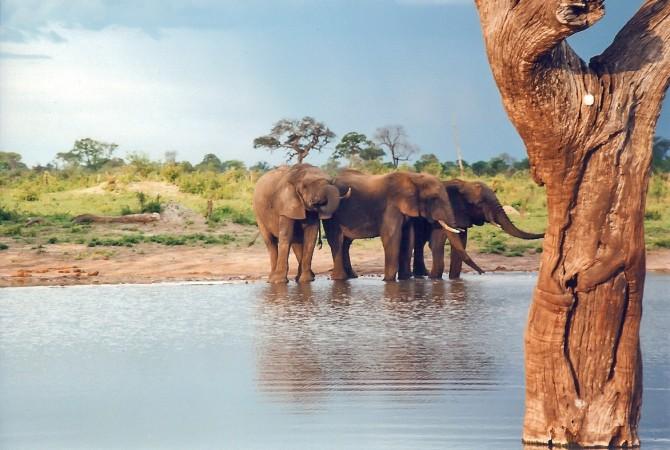
Hwange National Park - © Wikipedia
Must-Try Dishes in Matabeleland
Matabeleland cuisine reflects the region's rich cultural past as well as its natural riches. These dishes will give visitors a true taste of Matabeleland’s culinary traditions, deeply rooted in the land and culture of the region.
- Isitshwala: A staple dish, Isitshwala is made from maize meal and typically served with various stews or relishes. It’s enjoyed by most households and often paired with meat, vegetables, or legumes like beans and spinach.
- Sadza and Beef Stew: This is a popular traditional Zimbabwe meal across the country. The slow-cooked beef stew is rich in flavor, enhanced by tomatoes, onions, and local spices. Paired with sadza, it’s a comforting and satisfying dish commonly eaten during family gatherings.
- Umxhanxa: A seasonal dish made from pumpkin and maize, Umxhanxa is enjoyed particularly in rural areas. The ingredients are boiled together to create a sweet and filling dish, making it a unique part of the local cuisine.
- Tripe (Ulusu): Ulusu, or tripe, is a popular dish made from cow stomach. It’s slow-cooked with tomatoes, onions, and spices to create a tender and flavorful meal. It’s usually served with isitshwala and is beloved for its rich taste and texture.
- Amahewu (Fermented Maize Drink): Amahewu is a traditional fermented maize drink, often served as a refreshing beverage during meals or as a light snack. It has a slightly tangy taste and is enjoyed by locals as a thirst quencher, especially on hot days.
- Gizzards (Inhliziyo): Gizzards, or chicken hearts (inhliziyo), are a common street food in Matabeleland. Grilled or fried, they are often served as skewers, offering a tasty and protein-rich snack that pairs well with local sauces or relishes.
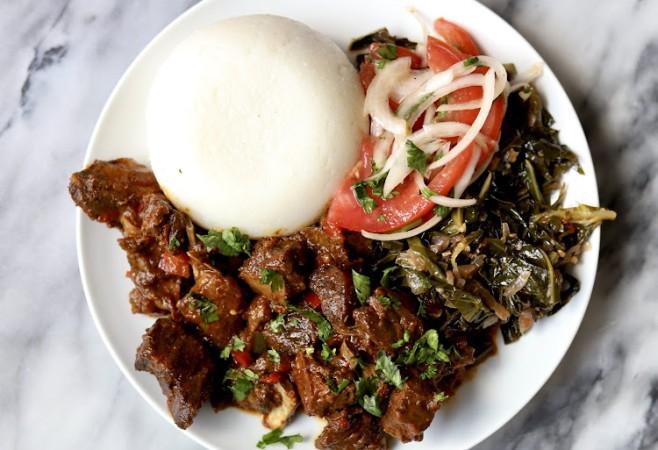
Sadza and Beef Stew - © The Star
Festivals & Local Celebrations
Matabeleland is a region alive with vibrant festivals and cultural celebrations, offering visitors a glimpse into the heart of Ndebele traditions. Participating in these festivals is a fantastic way to experience the local way of life.
Ndebele Cultural Festival
The Ndebele Cultural Festival, held yearly, is a vibrant celebration of the region's past. It features traditional dances, music, and art exhibitions that showcase the unique craftsmanship of the Ndebele people. Visitors may immerse themselves in the rich culture by seeing performances like the isitshikitsha dance.
Intwasa Arts Festival
Hosted in Bulawayo, the Intwasa Arts Festival brings together artists from all over Zimbabwe and beyond. This multi-disciplinary event includes music, theater, visual arts, and literary sessions. It’s a perfect opportunity for art lovers to engage with local creativity and enjoy Zimbabwean talent.
Mzilikazi Day
This annual commemoration celebrates the founding of the Ndebele nation by King Mzilikazi. The day is marked with traditional ceremonies, performances, and storytelling sessions that pay tribute to Ndebele history. It’s an important cultural event that attracts both locals and tourists.
Umthwentwe WaBantwana
A significant rite of passage, this celebration is held to honor boys transitioning into manhood in the Ndebele community. Although mainly a private ceremony, some parts of the event are open to visitors interested in learning about local customs and traditions.
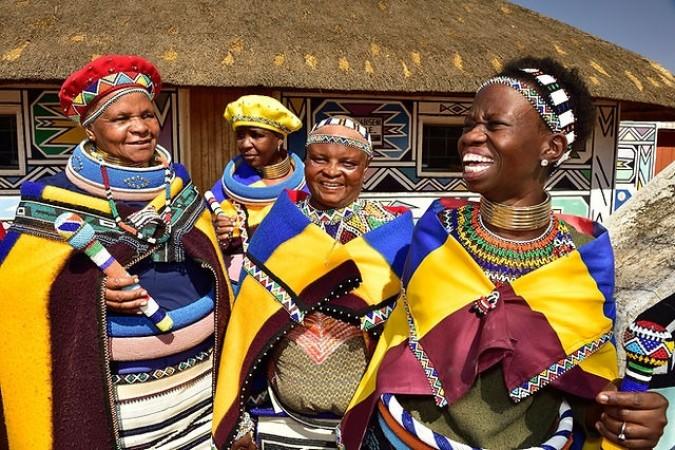
Ndebele Cultural Festival - © Wikimedia
What to Do in Matabeleland
- Safari Tours in Hwange National Park: For wildlife enthusiasts, Hwange National Park is a must-visit. Go on a guided safari to spot elephants, lions, and the African wild dog. The park offers both game drives and walking safaris, allowing visitors to get up close to the wildlife.
- Hiking in Matobo National Park: Hikers will love the trails in Matobo National Park, known for its granite rock formations and ancient San rock art. The park also offers a chance to see black and white rhinos, as well as the gravesite of Cecil Rhodes, perched atop a hill with sweeping views.
- Victoria Falls Adventure Sports: If you’re an adrenaline junkie, Victoria Falls offers activities like white-water rafting, bungee jumping, and helicopter tours. The falls are a UNESCO World Heritage site and provide one of the most awe-inspiring experiences in Africa.
- Bulawayo City Tour: For a mix of history and culture, take a city tour of Bulawayo. Visit landmarks such as the Bulawayo Railway Museum and the National Gallery of Zimbabwe. Stroll through bustling markets to shop for local handicrafts and souvenirs.
Shopping in Matabeleland
- Ndebele Beadwork and Pottery: Ndebele beadwork is world-renowned for its intricate patterns and vibrant colors. Visitors can purchase beaded jewelry, bags, and home décor. Handmade pottery, featuring traditional designs, is also widely available and makes for a meaningful souvenir.
- Bulawayo’s Makokoba Market: One of the oldest markets in the region, Makokoba Market in Bulawayo is the place to go for local produce, traditional clothing, and handmade crafts. It’s an excellent spot to mingle with locals while shopping for unique, handcrafted items.
- Arts and Craft Centers: Bulawayo has a number of arts and craft centers where local artisans sell their goods. The National Gallery of Zimbabwe in Bulawayo features a collection of local art, perfect for travelers looking to bring home original Zimbabwean artwork.
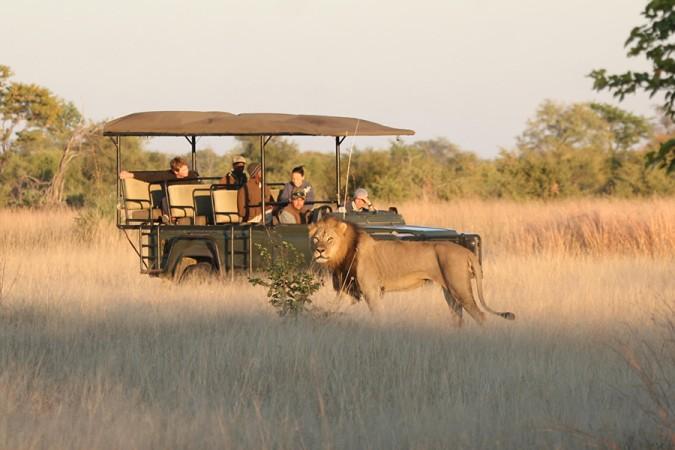
Safari Tours in Hwange National Park - © Zimbabwe Tourism
Weather in Matabeleland: Best Time to Visit
Matabeleland experiences a semi-arid climate, making it a year-round destination with distinct weather patterns that can influence travel plans.
Dry Season in Matabeleland
This is the most popular time for tourists to visit Matabeleland. During this period, the weather is mild and dry, with cool evenings and warm days. Daytime temperatures average between 20°C and 25°C, ideal for outdoor activities such as safaris and hiking in Matobo National Park.
Wet Season in Matabeleland
The wet season brings higher temperatures and afternoon thunderstorms, with average temperatures ranging from 25°C to 30°C. While some areas may experience heavy rainfall, it’s also a beautiful time to see the region's lush landscapes. Wildlife spotting in Hwange National Park can be more challenging, but it’s a great time for birdwatching.
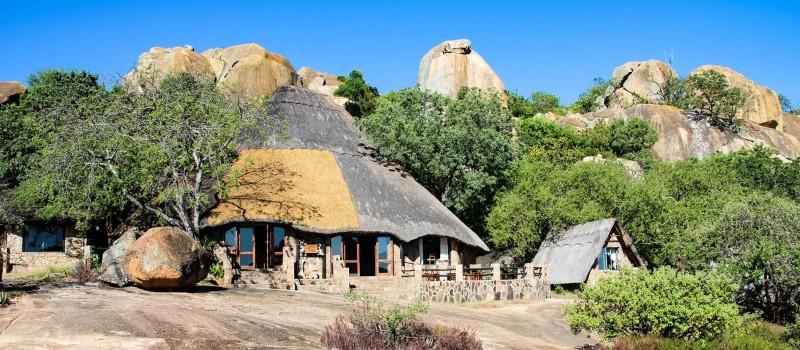
Safari camp in Matabeleland - © Facts.net
Essential Travel Information
Getting Around Matabeleland
- Public Buses: Local buses are the most affordable option for getting around towns and between cities like Bulawayo and Victoria Falls. However, they can be crowded and slow, so they may not be the most comfortable option for tourists with tight schedules.
- Minibus Taxis (Kombis): These shared minibus taxis are a popular way to travel within cities and between towns. They’re fast, inexpensive, and readily available, but they can be cramped. For shorter trips, kombis are a practical option, although they may lack the comfort and reliability of private transportation.
- Car Rentals: Renting a car is ideal for tourists who want more independence and flexibility in exploring Matabeleland, particularly for visiting attractions like Hwange National Park or Matobo Hills. Driving in Zimbabwe is on the left-hand side, and 4x4 vehicles are recommended for more remote areas, especially during the rainy season.
- Flights: For longer distances, such as traveling between Bulawayo and Victoria Falls, domestic flights are available and provide a faster alternative.
ATM & Banking Services
ATMs and banking services in Matabeleland are easily accessible in major towns, with most ATMs accepting international cards like Visa and MasterCard. However, in rural areas, ATMs can be scarce, so it's advisable to carry some cash. While Zimbabwean dollars are the official currency, US dollars are widely accepted for larger transactions, making it helpful to have small denominations on hand. Most hotels, restaurants, and tourist attractions accept credit and debit cards, though smaller markets and local shops may require cash.
Where to Stay in Matabeleland
- Hotels: Bulawayo, the region’s largest city, has a wide range of hotels, from upscale to budget-friendly. These hotels provide modern amenities such as Wi-Fi, restaurants, and comfortable rooms, catering to both leisure and business travelers.
- Safari Camps: For visitors heading to Hwange National Park, staying at a safari camp is an unforgettable experience. These lodges offer a blend of luxury and adventure, with guided safaris, scenic views, and the chance to observe wildlife directly from your accommodation.
- Guesthouses: Smaller towns and cities across Matabeleland feature cozy guesthouses and bed & breakfast options, which provide a more intimate, home-like experience. These lodgings often offer personalized service and are a great way to experience local hospitality.
- Homestays: For a truly immersive experience, some locals offer homestays, where visitors can live with a family and experience Ndebele culture firsthand. Homestays are more common in rural areas and provide a unique opportunity for cultural exchange and a deeper connection to the local way of life.
Articles for you

Experience Aboard The RV Indochine II - A Mekong Cruise With Tweet World Travel
The RV Indochine II is a luxury river cruise ship, offering an unforgettable journey through many attractions along the Mekong River. Built in 2017, this upscale vessel combines colonial elegance with modern conveniences to create a comfortable yet stylish environment for its crew and passengers. The ship’s intimate size makes it ideal for those seeking a more personal cruising experience while exploring Vietnam and Cambodia rich culture, scenery, and heritage. Whether you're gazing at the landscape from your private balcony or enjoying authentic local cuisine, RV Indochine II promises an exotic adventure like no other.

Witness Stilt Fishing In Sri Lanka: An Eco-Tourism Experience
Sri Lanka, renowned for its stunning beaches and rich cultural heritage, harbors a unique tradition that has captivated travelers for centuries: stilt fishing. This ancient practice, passed down through generations of coastal communities, blends artistry with necessity, offering a glimpse into a way of life intimately connected to the island's coastal rhythms. Stilt fishing in Sri Lanka isn't merely a means to catch fish; it's a cultural emblem, embodying the resilience and ingenuity of Sri Lanka's fishing communities.

Make Your Trip Stress-Free With The Tweet Trip App
Embark on your next adventure with confidence by downloading the Tweet Trip App, available for both iOS and Android. This essential travel companion allows you to view your detailed itinerary, stay connected with your tour guide and fellow travelers, receive real-time updates, and provide feedback effortlessly. With features like in-app messaging, emergency assistance, and location sharing, the Tweet Trip App ensures you travel smarter, stay connected, and enjoy a seamless, worry-free journey. Get started today and make the most of your travel experience with Tweet World Travel.

Pedal Through Paradise: Unveiling Cambodia's Hidden Gems on Two Wheels
The gentle whir of bicycle wheels mingles with the distant chants of monks as you glide past emerald rice paddies stretching to the horizon. This is Cambodia - a sensory explosion waiting to be experienced on two wheels. At Tweet Tours, we believe there's no better way to immerse yourself in the Kingdom of Wonder than by bicycle.
Cambodia isn't just a destination; it's a living, breathing tapestry of ancient wonders, natural beauty, and vibrant culture. Our carefully crafted cycling tours take you beyond the typical tourist haunts, offering a unique perspective on this captivating country. Ready to clip in and discover the magic of Cambodia? Let's ride!

Trekking in the Himalayas: A Journey Through Nepal's Majestic Peaks
The Himalayas rise from the earth like colossal guardians, their snow-capped peaks piercing the sky in a display of nature's raw power and beauty. Nepal, nestled at the heart of this mountain range, serves as the gateway to some of the most breathtaking trekking experiences on the planet. Here, the air is crisp and thin, filled with the promise of adventure and the whispers of ancient tales.
With Tweet Tours, as you set foot on these hallowed trails, you're not just a traveler - you're a modern-day explorer, following in the footsteps of legendary mountaineers and age-old traders. Each step takes you further into a world where nature reigns supreme and human resilience is tested against the backdrop of some of the world's highest peaks.
From the moment your boots touch the ground in Kathmandu, you'll feel the pull of the mountains. The bustling streets of the capital, with their sensory overload of sights, sounds, and smells, soon give way to serene mountain paths where the only soundtrack is the crunch of gravel underfoot and the distant tinkling of yak bells.

Exploring Mui Ne's Wonders: Unique Attractions & Local Dishes
Nestled along the southeastern coast of Vietnam, Mui Ne emerges as a captivating gem, blending natural wonders with cultural richness. Renowned for its stunning landscapes and unique attractions, Mui Ne beckons travelers seeking both relaxation and adventure in equal measure. Mui Ne's renowned beach dunes, bustling fishing towns, and excellent local food await exploration at every turn.
The allure of Mui Ne lies not only in its pristine beaches and crystal-clear waters but also in its diverse range of activities catering to every traveler's whims. Whether you're drawn to thrilling water sports like kitesurfing and windsurfing on its dynamic shores or seeking tranquility amidst the picturesque Fairy Stream, Mui Ne promises an unforgettable journey filled with discovery.
